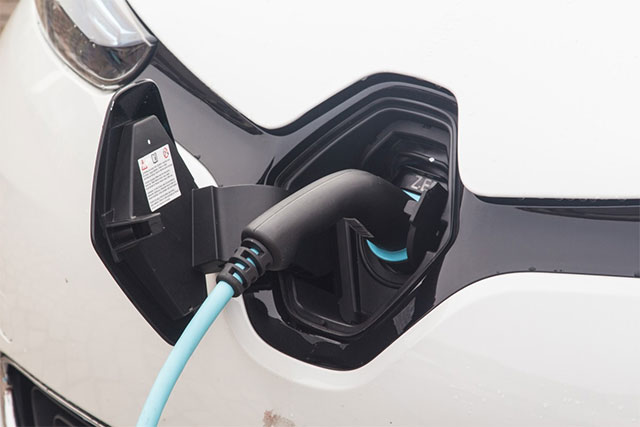The automotive industry has come a long way, and among the main target is reducing the carbon footprint. You want to get around without emitting significant gases, a concern that continues to propel creative developments in the industry. The biggest highlight in the modern setting is the electric cars. Relying purely on gasoline is quickly becoming a thing of the past.
While electric vehicles haven’t completely taken over the world and probably won’t in a few years, the progress is undeniable. You’ve probably searched PHEV Questions answered as you look to make the switch; you are on the right track.
Switching to electric vehicles can be overwhelming, especially if you drive a lot. Sure, you want to reduce vehicle emissions, but what about getting stranded? An all-electric car might not inspire as much confidence as you need for your routine. We’ve come a long way, with modern electric vehicles promising more miles. Still, you might not be as comfortable with the switch. Not to worry, though; you can ease in with PHEV, allowing you to enjoy both worlds and lower the carbon footprint.
Table of Contents
Everything You Need to Know When Looking for PHEV

Here are the common PHEV questions and answers to help you make the switch.
PHEV
Electric cars are powered purely by electric motors. They feature batteries offering higher capacities, typically averaging 350 miles range. Conversely, PHEV (Plug-in Hybrid Electric Vehicle) features a traditional internal combustion engine and electric motor rechargeable from electrical outlets as well as energy produced while driving. This means that you can go on pure electric mode following the distance you want to cover, typically ranging 50 miles.
The advancement gives you peace of mind as you work to switch to electric cars. The electric mode lowers vehicle emissions, and when covering longer distances, you won’t have to worry about getting stranded since the combustion engine you are used to kicks in, keeping you going. As you get used to the electric mode, you’ll have an easier time switching to an electric vehicle (EV), also known as a battery-electric vehicle (BEV).
Modern PHEVs are designed to optimize energy consumption. This includes features like topography route navigation. The feature selects the best driving option, either a combustion engine or electric mode. For instance, while driving around the city, the car can run on pure electric mode and switch to a combustion engine when in more demanding topography. These innovative features result in low fuel consumption, which is friendly to your pocket and environment.
The Charging
How and where can you charge PHEV? When you buy the car, it comes with a standard charging cord (typically 120V), much like your Smartphone or laptop. You can plug in the car in your carport or garage outlet. The car can also be charged in stations, most operating at 240V. Most homes have 240V, common due to electric cloth dryers and other appliances. You can also install a 240V charging station at home as you spice up your electric car use. As the trend continues to gain a stronghold, more charging stations are popping out. Today, virtually every state has multiple charging stations.
The where is out of the equation; now, the big PHEV questions answered take us to how. This is more so the duration of the charging process. How long it takes to charge your plug-in vehicle is reliant on the battery and the charge station, either 240 or 120V, and if you are using a fast charger. Typically, PHEV with a small battery takes 1.5 hours at 240V and three at 120V. Larger batteries can take upwards of 20 hours at 120 and up to 8 hours at the 240V charging station. If your car is equipped with fast charging technology, it can hit 80% charge within as few as 20 minutes.
Your standard there-pin socket is enough to plug in and charge the car, but how about the rain. Water and electricity do not mix, and the last thing you want is to be electrocuted either at home or at the charging station. It is safe to charge the can in the rain. The charger and the car are designed with several safety levels in place, protecting you and your car in such instances. This allows you to charge with no fear of electric shock. It is also safe to take the PHEV through various car washes, just like you do with the traditional engine. You won’t get electrocuted if you are worried about accidents, like sliding into a pod/pool.
Winter Season
Even your combustion engine car demands more power during the cold season, so it is only natural to consider your electric car driving experience in such times. Although the energy consumption increases, PHEVs are energy efficient, allowing you to cover more miles. The engine doesn’t generate residual heat, and cabin heating relies on electric power. However, the batteries are warmed up, helping to maintain their properties as you drive. Moreover, with the advanced heating systems in modern cars, energy consumption to keep you comfortable won’t drastically reduce the distance the car can cover.
The Golf Cart Comparison
Many consumers compare electric cars to golf carts. While most golf carts are electric-powered, the car doesn’t drive the same way. They are not slow and boring. The PHEV electric motor can provide enough torque to match your driving expectations. Fast and smooth acceleration, ad without noise, makes the driving experience fun, and by cutting the vehicle emissions, safer for the environment. Tesla Roadster has continuously been used as an example of how fast the cars can accelerate, averaging 0-60 mph in less than 4 seconds.
Switching to electric cars doesn’t have to be a nightmare. With PHEV, you can experience the better of the two worlds and make the witch more comfortable. Today, buying PHEV is not a financially draining endeavor. While the prices greatly vary following the manufacturer and model, you’ll find a solution best geared to your situation and needs with the many financing options available. Moreover, you can take advantage of special pricing, federal tax breaks, incentives, and rebates to make the process more pocket-friendly.
PHEV, to some extent, still rely on fossil fuel. Nonetheless, the vehicles are equipped with technology designed to reduce carbon emissions, making it a great deal as we strive to make the environment safer.













